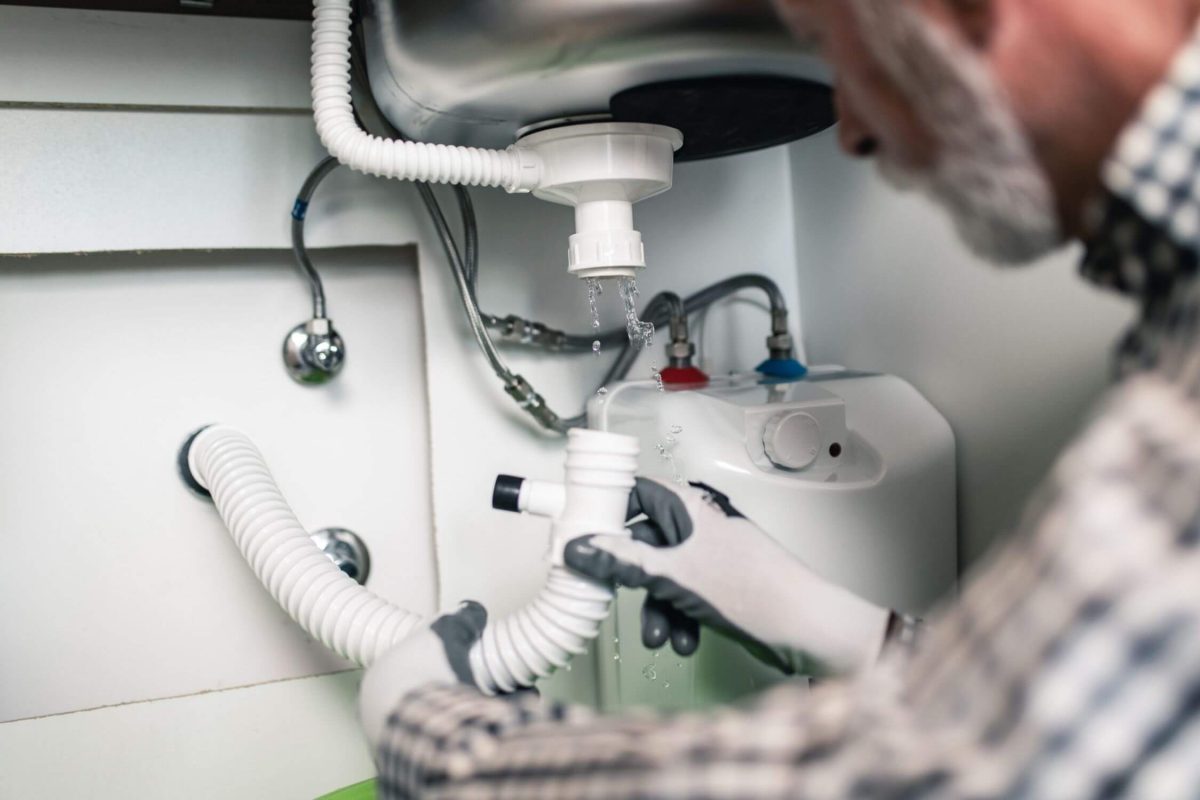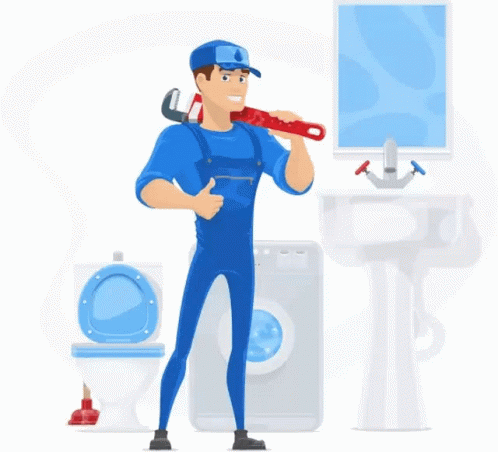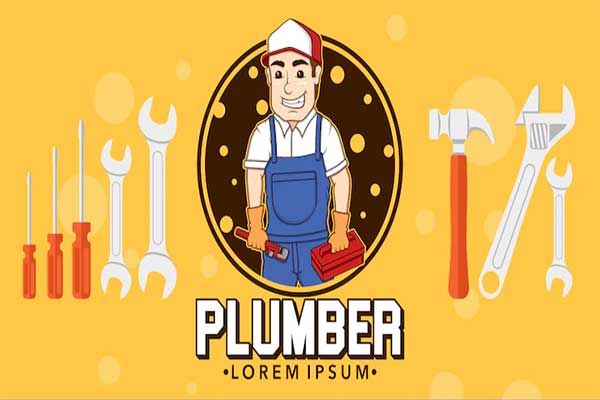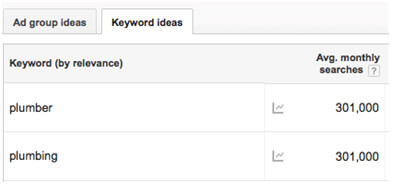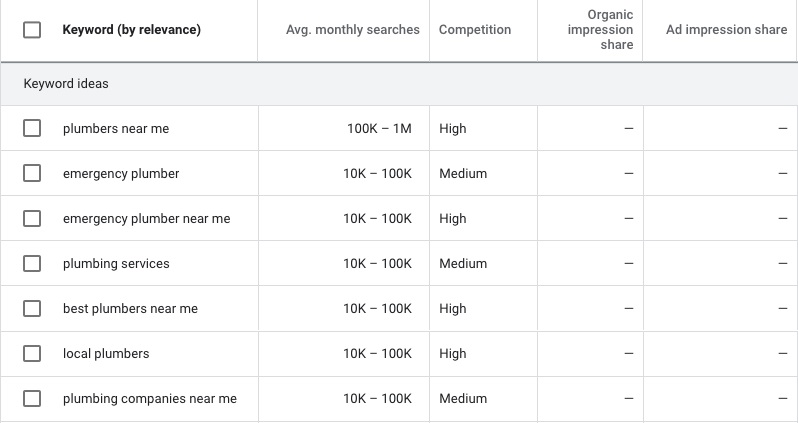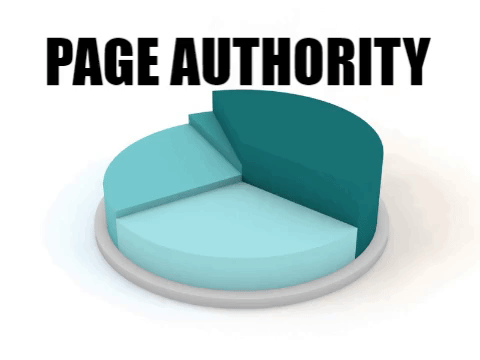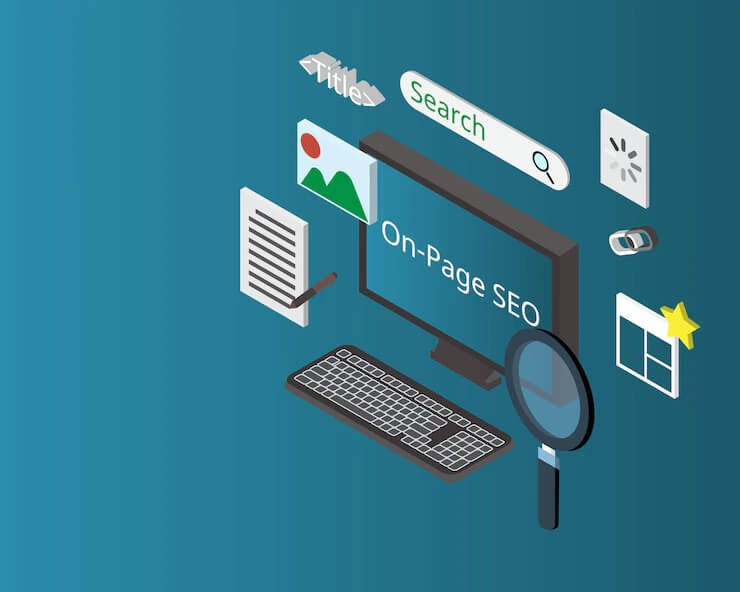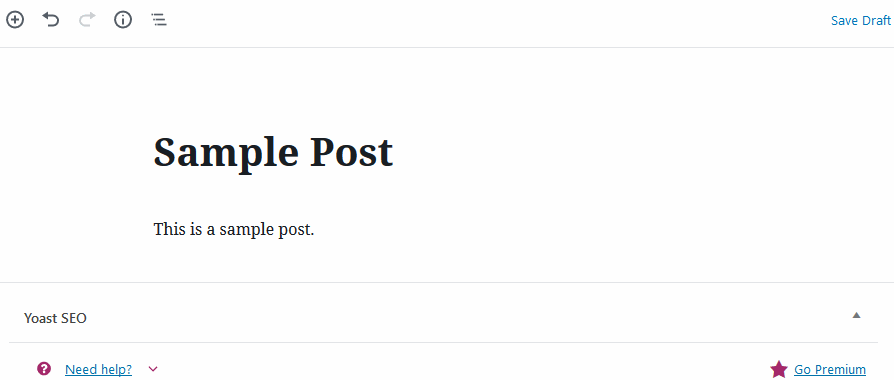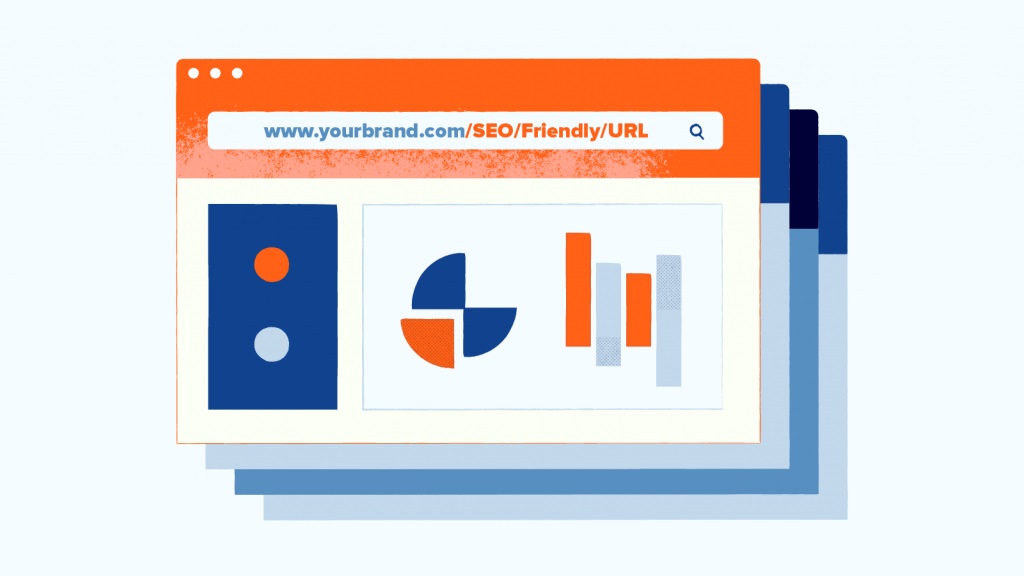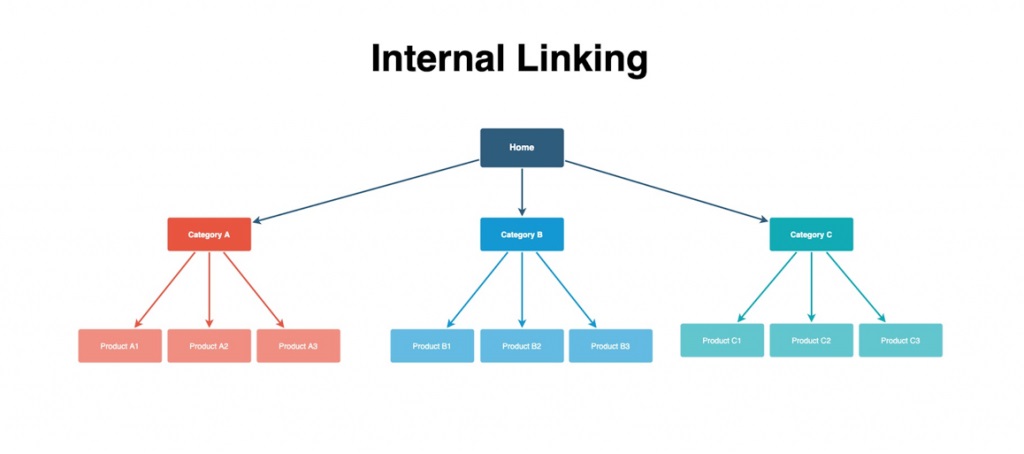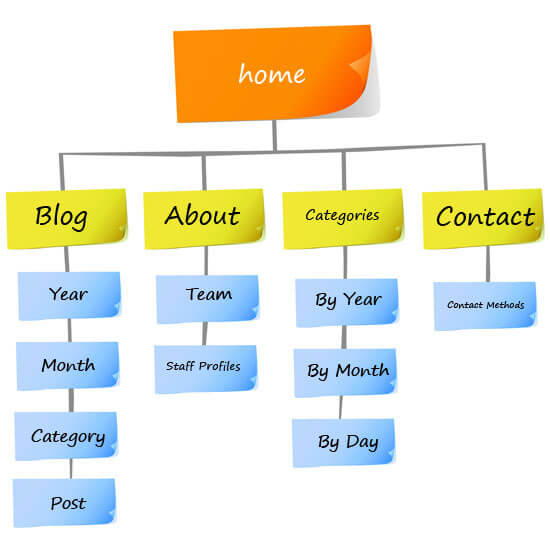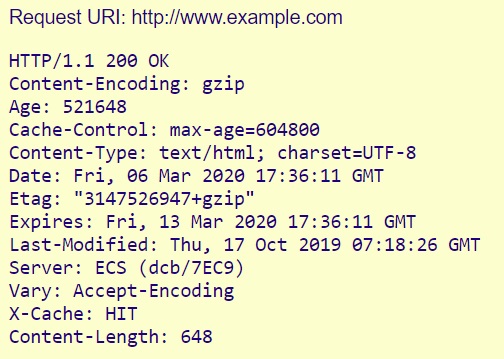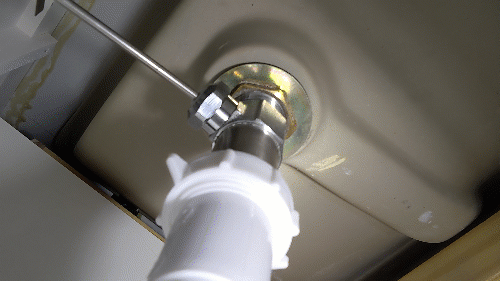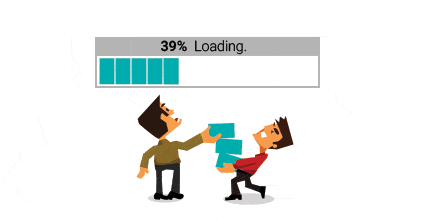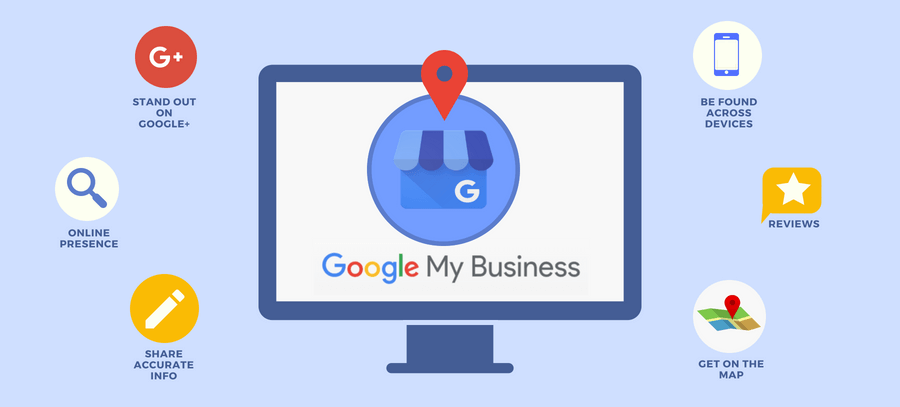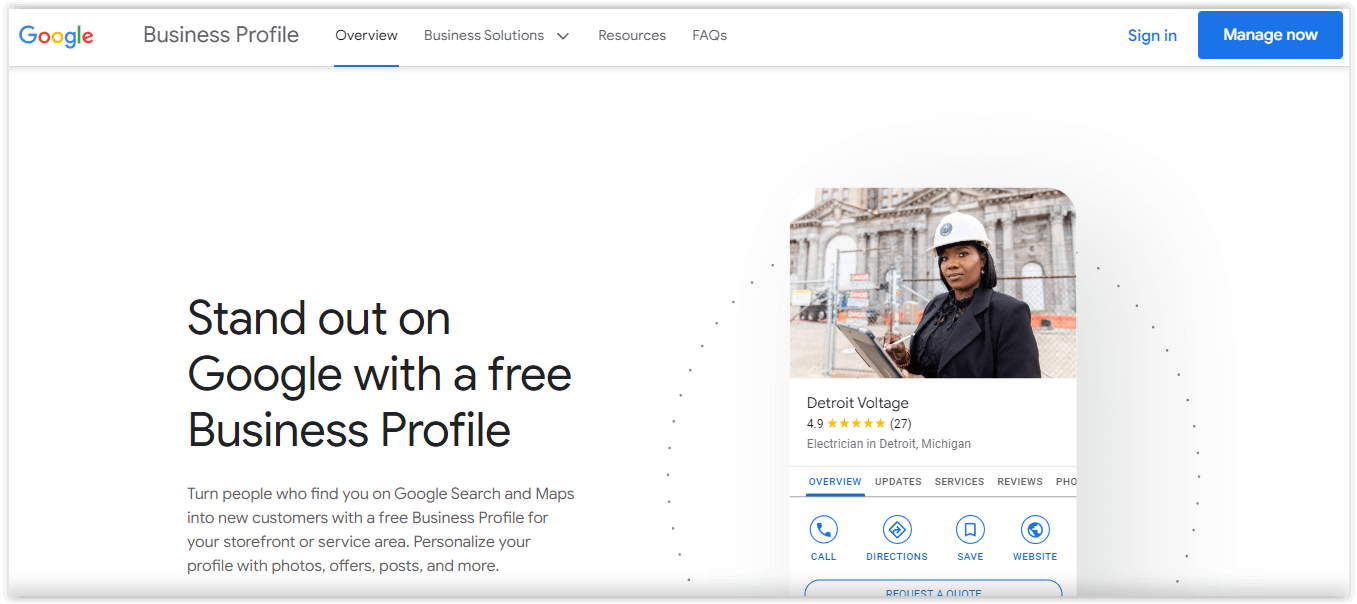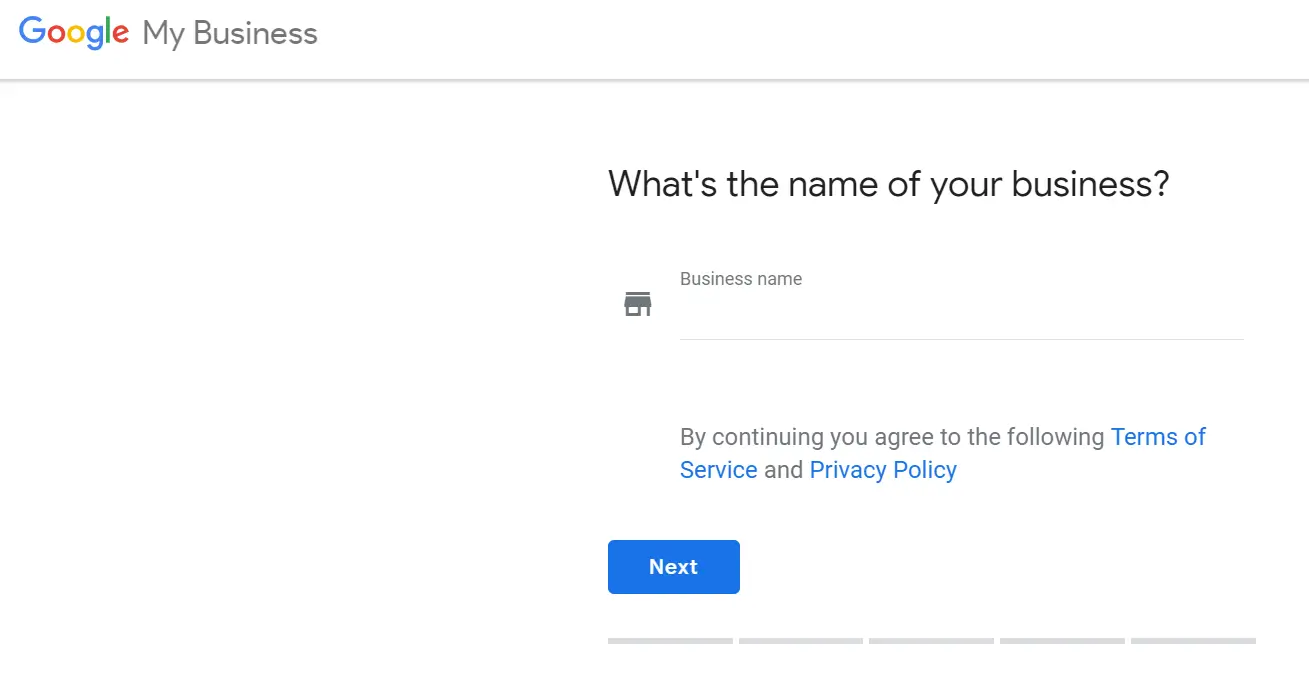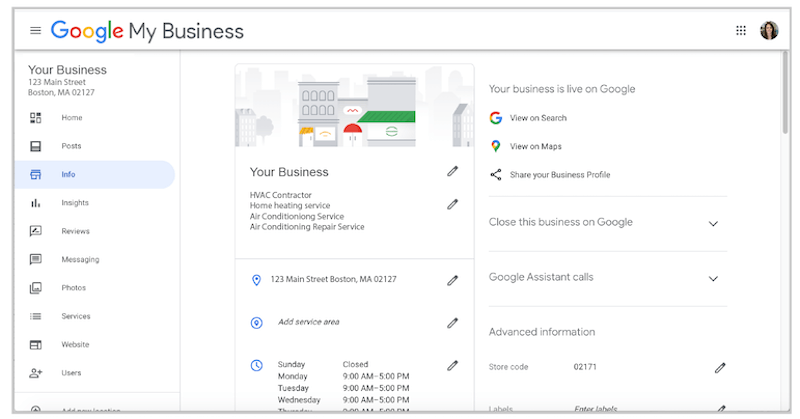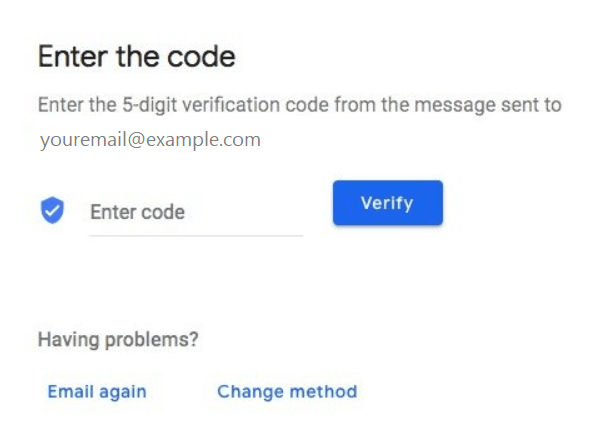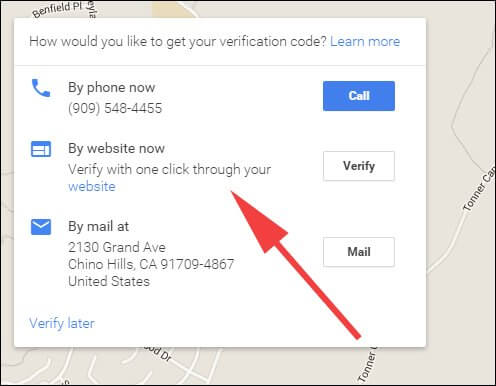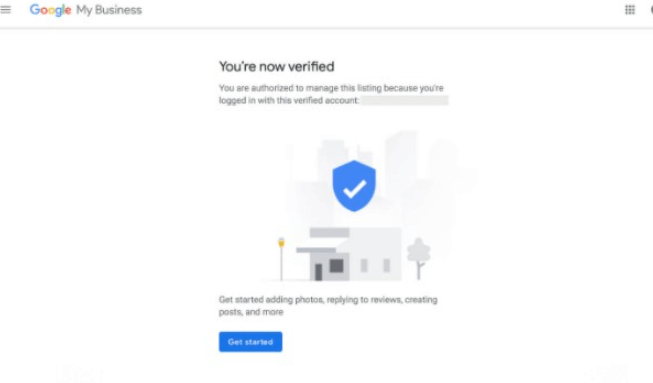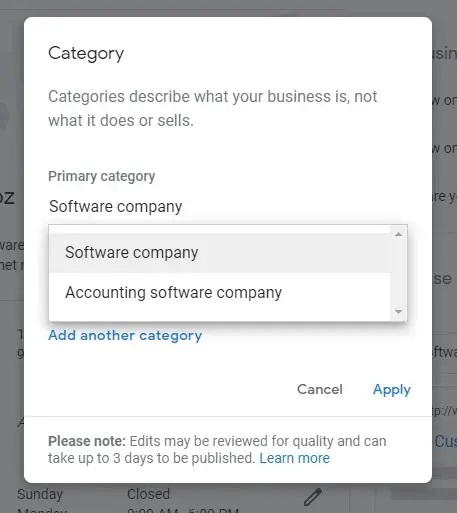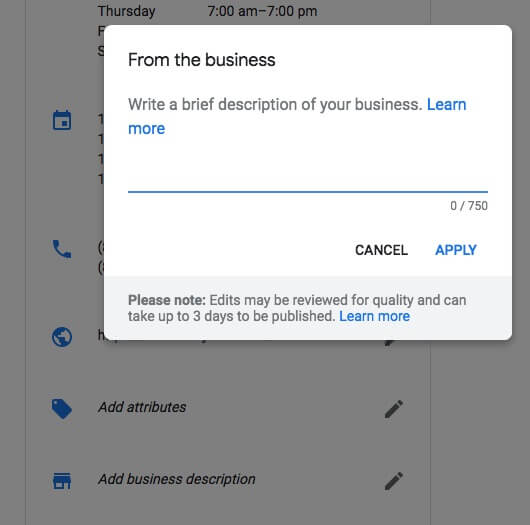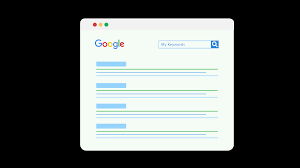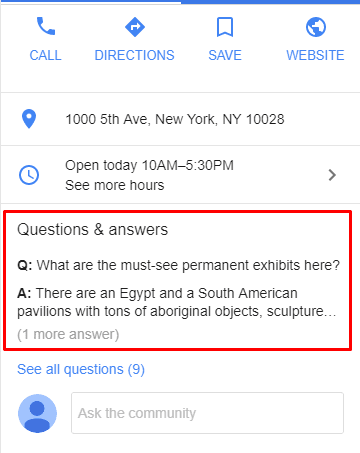Improve Organic Rankings, Increase Leads and Profitability with SEO for Plumbers.
As a plumbing business owner, it’s not sufficient to only have a company website. Head over to Google and type “plumbing contractor near me” or “plumbers in [your city]. If your plumbing website is not ranking on the first page of Google, then you are losing new business to your competition, guaranteed.
There is no secret that ranking higher than other plumbers on search engines like Bing or Google is crucial. But what if you don’t know the plumbing SEO tips and tricks that will help your website rank higher on Google or Bing? If you are not getting more clicks on your website, you are losing sales/leads to other plumbing contractors online.
Blackstorm Design + Marketing has come to be known as the best SEO for plumber’s destinations. Search engine optimization provides a unique advantage for local plumbing contractors. This post will provide an introduction and overview to search engine optimization and how you can leverage it to get a consistent stream of clients online.
In this ultimate SEO for plumbing guide, you will learn:
- What is plumbing SEO, and why is it important
- How does SEO for plumbers work?
- What is included in plumbing SEO services?
- Keyword research and targeting best practices
- On-Page Plumbing SEO best practices
- Information architecture best practices
- Technical Plumbing SEO Best Practices
- Implementation stage
- How long plumbing SEO takes
- How to track and monitor SEO results for plumbers
Without further ado, let us dive in!
What is Plumbing SEO and why is it important?
If you have ever discussed about internet marketing strategies, you might have heard the synonym SEO tossed around. You may have heard that plumber SEO is crucial and has something to do with Google or Bing. But what exactly is plumbing SEO? Read on to get an in-depth overview of SEO and why your plumbing business needs it.
SEO is a short form for Search Engine Optimization. At its core, plumbing SEO focuses on improving the visibility of your plumbing website in the search engine results pages online. This implies that more prospects visit your plumbing website, thus increasing your online traffic and giving you a higher chance of selling your plumbing services to many people on the internet. Simply put, SEO for plumbers aims to improve two things; rankings and online visibility.
A homeowner notices that they have a broken pipe or a leaky faucet. Understanding very well that they can’t fix the problem on their own, they turn to search engines like Bing or Google to look for nearby plumbers.
If you are not investing your time and effort to optimize your plumbing website for Google, then prospects or clients will not be able to find your business in the local search engine results. Worst of all, you are likely to lose new business to your competitors if you continue with an approach to plumbing marketing.
If a prospect or client types in a keyword relevant to what your plumbing business can offer, don’t you want to be on that first page of search results alongside your competition? Of course, every plumber wants to be seen at the coveted top position on Google.
There are several reasons why Local SEO is crucial for plumbing contractors. Plumbing SEO can be one of the most cost-effective internet marketing strategies when correctly done.
Here is why;
Plumbing SEO is Affordable
Do you know that SEO for plumbers can minimize other advertising markets? Figure out what you may spend on local magazine ads, direct mailers, and other forms of conventional marketing.
Plumbing SEO minimizes advertising costs when you start ranking on top of the search engine results page. When you rank high on Google, you don’t require to pay for clicks or advertise your page. Your ranking will show up above the rest as long as you continue to work on your SEO strategy.
Overall, this will bring more money into your wallet and less than you require to spend on conventional advertising and other forms of plumbing marketing.
Sure, time is money (and plumbing SEO takes time to master), but all factors are kept constant. Still, the process is less expensive compared to the revenue it generates for your plumbing business.
Local SEO Attracts Qualified Plumbing Leads
The promise of high organic traffic won’t be of great help if the traffic is irrelevant or of low quality. It’s crucial to attract clients who intend to hire your company for plumbing services, and those clients must be within your service area.
How do you attract leads who are interested in your plumbing services online? It starts with your plumbing SEO strategy. Incorporating a wide range of keywords on your plumbing website will generate the right kind of traffic for your business.
Based on your keyword choice and targeting options, plumbing SEO can generate qualified leads that are essentially more than 90% near closing when you talk to them over the phone.
Let’s say you are a plumbing contractor in Murfreesboro, TN.
Figure out the difference between cold calling a nearby homeowner versus a potential client looking for a “plumber in Murfreesboro, TN” and coming across your plumbing website.
They are looking for something specific-one that your business can offer them instantly, and it’s clear from the keywords they are typing in on Google search.
- Consideration: Low-ranking plumbers will not even obtain consideration when prospects want to book plumbing jobs.
- Discovery: Getting a higher placement on search engines like Google or Bing affects the ability of local homeowners to find your plumbing business.
- Growth: Organic search impacts each aspect of your plumbing marketing, making it easier to spur growth.
- Reputation: Ranking on top of organic search results affects the way potential clients see your plumbing brand.
SEO for plumbers Improves Your Visibility on Search Engines
If you have not optimized your plumbing website for local search, now it’s time to begin. Plumbers who invest in SEO experience first page rankings on Google and the advantages that come with it.
There are multiple ways to optimize your plumbing website for local search. You can achieve that by including keywords on your website that contain geographical terms, and including these keywords with your plumbing services will assist enhance your visibility on Google.
Other optimization techniques include off-page plumbing SEO. You can improve search engine rankings by claiming and optimizing your Google Business Profile and backlink strategies like guest blogging.
Other reasons why local SEO is crucial for plumbers include:
- SEO improves user experience on your plumbing website
- Builds local authority
- It creates connection and trust with clients
- Helps you remain on top of client’s minds
- SEO helps you reach your target audience
- It is trackable unlike other conventional marketing strategies
- SEO benefits other plumbing marketing strategies like online reputation management or PPC.
- Brings more clients through organic search.
- Plumbing SEO helps you to stay ahead of the competition.
How Does Plumbing SEO Work?
What drives organic traffic from search engines? How do search engines like Google or Bing work? Search engines are utilized when they have a query and are turning on the internet such as Google or Bing for the answer. Google algorithms are computer programs that search for clues to offer prospects the exact results they are searching for.
Search engines depend on algorithms to find pages and determine which ones to rank for a specific keyword. There are three steps to how search engines work: crawling (otherwise known as the discovery phase), indexing (filling stage), and ranking which is the last retrieval stage.
Step 1: Crawling
The initial step is crawling. Search engines send out crawlers to identify new webpages and record details about them. These crawlers are also known as ‘robots’ or ‘spiders.’
The primary function of these crawlers is to help discover new web pages that exist and also to regularly check the content on pages that they have visited previously to check whether they have been updated or changed.
Google crawls web pages by following links that they have previously discovered. Therefore, if you have a blog post and it’s linked from the homepage when Google crawls your homepage, it will afterward search for another link and might follow the link to your new blog.
Step 2: Indexing
This is the second step that search engines use when ranking plumbing websites. Google or Bing use indexing to store content from the Internet and showcase it via search results. Indexing occurs after crawling. Most pages will enter a Google index, but blocked, duplicate or spam pages cannot get indexed.
Once indexing and crawling happen, Google will analyze pages against its numerous factors such as:
- Backlink profile
- Speed
- Mobile-friendliness
- Usage of keywords
- And more.
Step 3: Ranking
Ranking only occurs after the indexing, and crawling phases are complete. So once Google has indexed and crawled your plumbing website, your website can be ranked.
There are hundreds of ranking signals that Google uses to rank and sort content, and they are all classified under three main pillars: on-page optimization, off-page optimization, and technical optimization. Some of the factors that search engines use to rank plumbing websites are:
- Presence of the keyword in the title tag – Whether the keyword was used on the page and within the title tag.
- Page loading speed – Whether the web pages load faster and are optimized for mobile devices.
- Website reputation – Whether the web page and site are regarded as credible or reputable for the topic being looked for.
- High-value content on your plumbing website
- Relevant links – from high-quality websites.
The good news is that you don’t have to look for a search engine expert to rank for crucial plumbing keywords in the organic search results. This post will take you through proven SEO best practices for optimizing your plumbing website that can assist drive targeted traffic through search without compromising the integrity of your website. If you want to learn how Google work, there are tons of valuable resources, including:
Now, back to the fundamentals of plumbing SEO. Without further ado, let’s dive into Plumbing SEO tactics and strategies that will help your plumbing company obtain more clients and traffic from organic searches.
Best Plumbing SEO Keyword Research Practices
Without the right plumbing keywords, your plumbing SEO campaign cannot succeed. You can think of keywords as the vehicle of your marketing campaign, and internal links are synonymous with your fuel. Much of your results and success will be driven by every keyword targeted.
Simply put, keywords are the phrases and terms your prospects use when searching for plumbing services you offer online. They reveal crucial information, including the mindset of prospects when they attempt to locate what you provide, and can affect the success of your plumbing business.
Successful plumbing keyword research achieves two things, and it assists the right prospects to find your plumbing business and boosts the ranking of your pages and posts on search engines.
Poorly selected keywords, on the flip side, leave your plumbing website in obscurity. Worse still, they lower your rank if they don’t match the client’s intent.
Using the right plumbing keywords in blog posts, articles, or service descriptions can help you rank higher in search engine result pages and can generate new leads and traffic for months or years after you have published those pages.
The first step in plumbing SEO is knowing what you are optimizing your plumbing website for. This involves identifying keywords that people are searching for that you wish your plumbing website to rank for in search engines such as Google or Bing.
There are various elements that you need to consider when determining the keywords that you want to target in your plumbing website including;
Keyword Search Volume
Obviously, if no prospect is looking for a phrase or keyword related to your plumbing business, optimizing for it would not help. It is crucial that you research search volume and ensure your choice of keywords will generate the much-needed traffic.
You might end up ranking on the first page of Google for a particular keyword, but if no prospect search for it, it will not generate relevant traffic to your plumbing website. This is synonymous with opening a shop in a ghost town. Keyword search volume is measured using MSV (monthly search volume), which implies the number of times the term is searched per month across all the target audiences.
Relevance
Search engines like Google or Bing rank content based on its relevance to search queries. This is where the idea of search intent comes into play. Your plumbing content will only rank for a search term if it meets the needs of searchers.
Furthermore, your content must be the best guide or resource out there for the search query. After all, why would search engines rank your content in the top spots if it offers less or no value than other posts that exist on the web?
Keyword Competition
This is one of the crucial factors in keyword research for plumbers but is normally overlooked. You don’t want to target a plumbing keyword if you can’t handle the competition. There are two factors that you need to consider when you want to know how competitive a keyword is for a specific keyword:
- How many plumbing websites are you competing against?
- How strong are these competing web pages?
Just like with any other business opportunity, you need to assess the chances of ranking for particular plumbing keywords.
First, you need to understand who your ideal clients are and what they will look for. If you don’t understand who your potential customers are, think of this as a great place to start marketing your plumbing company in general and plumbing SEO.
Next, you want to know:
- What kind of plumbing services are they interested in?
- What are their pain points?
- What type of language do they use when describing the services they need?
Authority
Google will offer more weight to content sources it classifies as authoritative. That implies you must do all that you can to become an authoritative source by improving your site with informational, helpful content and promoting that content on social media platforms and backlinks.
If Google doesn’t deem your plumbing website as authoritative, then you can’t compete with authoritative sites unless you have exceptional content.
On-Page Plumbing SEO Best Practices: Tips to Improve Your Rankings On Search Engines
On-page plumbing SEO has the ability to bring countless wallet-out prospects and clients right to your plumbing website. Best practices for plumbing on-page SEO refers to tasks designed to assist improve your website’s ranking on Google or Bing.
We originally wrote this as a guide just for Blackstorm Design + Marketing customers, but later we figured out “Hey, who doesn’t love a great checklist for plumbing SEO? That’s why we decide to share it with the world. So here we come.
Here are our ten tricks on SEO best practices for plumbers that you need to know. Without further ado, let’s get started.
Title tags
Assuming that you have successfully done your keyword research, this is one of the most crucial on-page SEO elements. Title tags tell search engines like Google or Bing what your page is all about and that the page on your plumbing website is relevant for the search phrase or keyword. You should have unique title tags for every page. In organic search results, Google will highlight the keyword if a prospect or client looks for those terms. This boosts click-through rate and visibility.
Let’s say you are trying to rank for “Murfreesboro local plumbers” your title tag might look like this:
Murfreesboro plumbers
Best Practices:
- You should write your title tag like this: Primary keyword-secondary keyword|Brand name
- Utilize a dash in between your keyword and a pipe at the end of the name of your brand
- Avoid duplicating your title tags.
- Make sure your title tags have 55 characters or less, including the spaces. If you want to know more about title tag best practices, read this post done by Dr. Pete.
Meta Descriptions
Meta descriptions are typically the short page descriptions that show up under your title in organic search results. Although they are not classified as a ranking factor by Google, it can impact whether or not prospects click on your page-so-it is just as vital when doing on-page plumbing SEO.
Here is our list of best practices for meta descriptions:
- Make sure that your meta description is under 160 characters
- Include your keyword in the description.
- Use a compelling, full sentence (or two)
- Avoid alphanumeric elements like -, & or +
Image Alt tags
An alt tag is typically the name of an image, and your site images should utilize the correct alt tags. Image alt-tag is synonymous with SEO of your plumbing website’s images. It tells search engines what your image is about, which is crucial because search engines nowadays deliver image-based organic results just like they do with text-based organic results.
That implies consumers may discover your plumbing website via images. For them to do this, you need to add an alt tag to your images.
Here are some image alt tag best practices you need to follow:
- Make it as specific and descriptive as possible.
- Keep it short than 125 characters.
- Use keywords in a sparing manner and avoid overstuffing them.
- Make it relevant to your page content.
High-quality content with targeted plumbing keywords
The page content is typically the heart of your on-page plumber SEO, and it tells Google and readers what your plumbing business and website are all about. With all the recent Google Panda updates, it is extremely crucial that your page content is relevant and unique. If you have several pages that have the same content, then you are likely to be penalized by Google for duplicate content, and your Google rankings will suffer.
The initial step to crafting unique and relevant content is to select the right plumbing keywords and topics. Perform comprehensive keyword research by looking at Google phrases and seeing what works for your competitor’s websites. You can also use tools such as AnswerthePublic, UberSuggest, and Ahrefs.
Here are our surefire tricks for writing high-quality page content:
- Include short and long-tail keywords organically
- Add relevant and engaging visual content
- Write content that resonates with your specific buyer persona(s)
- Optimize for conversions with a call to actions (CTAs) to service pages and offers
- Create content that people will love to share and link to.
Structured Markup
Structured data or structured markup is simply the process of marking your plumbing site source code to help search engines like Google or Bing understand and find various elements of your content.
Structured markup is crucial if you want those knowledge panels, featured snippets, and other content elements you see when looking for something on Google. It’s also how your particular page information appears so neatly when a visitor shares your content on the social media platform.
Note: Structured markup is classified under technical plumbing SEO, but we included it here since optimizing it creates a good on-page SEO experience for users.
Keep your Page URLs descriptive but short
Your website URL is another prime place to insert plumbing keywords. According to studies, incorporating keywords in your site URL appears like a ranking factor.
But that doesn’t imply you should be crazy to add tons of search terms to your URL. Use the same restraint and discretion you applied with your meta descriptions and title tags.
In fact, it is common for a URL to appear shorter than that of those title tags.
Here are our best practices for your page URL:
- Include your primary keyword in the URL
- Keep your URL descriptive and short
- Use hyphens to separate words
- Use lowercase letters.
- Remove the unnecessary, extra words
- Use HTTPS if possible, as Google has already added security as a ranking factor
Internal Linking
Internal linking describes any link on your plumbing website that links to another page on your site. It is essentially the process of hyperlinking to other valuable pages on your plumbing website.
Internal linking is crucial for on-page plumber SEO since internal links send visitors to other pages on your plumbing website, keeping them around longer and thus showing Google your plumbing website is helpful and valuable.
Besides, the longer prospects are on your plumbing website, the more time Google has to index and crawl your website pages. This consequently helps search engines get more information about your website and rank higher on the Google search results pages.
Make your plumbing website mobile responsive
Google began favoring websites that are optimized for mobile devices even for those searching on desktops. So, making your website mobile responsive is extremely crucial.
It’s important to select a web hosting service, site theme, and design and layout of content that’s navigable and readable on mobile devices. If you are not sure about your plumbing website’s mobile readiness, utilize Google’s Mobile-Friendly Test tool.
Optimize your website speed
Whether accessed on a desktop or mobile device, your website should load quickly, possibly in less than three seconds. When it comes to on-page plumbing SEO, page speed comes in big time.
Google loves sites that have a good user experience. If your website loads slowly, it’s likely your visitors will not stick around for long, and Google notices that.
Information Architecture Best Practices
Information architecture focuses on how you organize or plan the pages of your plumbing website. The way you plan your plumbing website and interlink your pages can impact how different content types on your site ranks based on user searches or queries.
Information architecture is typically an overlooked area of plumbing website design. Without having a good understanding of how information architecture work, you can end up building a plumbing website that is more confusing than they require it to be or worse still, make your plumbing content inaccessible.
Quality content is the reason why prospects visit plumbing websites. We all know how crucial it is to create quality content, but what is more crucial is to ensure that your content is easy to find.
Search engines like Google or Bing perceive links as “votes of trust” and a great way of understanding what your page is all about and how vital it is (whether credible or not).
Google also pays attention to the text you use to link to web pages, commonly referred to as the anchor text which helps Google to know what your plumbing website is all about.
Likewise, a link from CNN shows that your plumbing website could be important if you link specific pages for numerous areas on your site that portray to search engines that a particular page is crucial to your website.
Besides, the pages on your plumber site have more external votes (from credible sources) and have the ability to help other pages on your site rank higher in search engine result pages.
This idea is called “PageRank.” However, PageRank doesn’t operate the same way it used to when it was first introduced, if you want to understand more about it, read the following good resources below:
Information architecture can be a daunting topic, especially for large plumbing websites, and there are numerous resources that have particular answers outlined at the end of each chapter.
Some of the best practices for information architecture include:
Keep your most important plumbing search pages. This means linking to them occasionally in navigation elements and where possible linking them from a page that has the highest number of links.
You need to understand your most linked-to-pages (use tools like Ahrefs, Moz, and Majestic SEO).
Generally, you need to adopt a flat information architecture for your plumbing website, implying that you keep any plumbing page and most linked-to plumbing web pages. If you want to understand how you can flatten your plumbing website information architecture, click on this video to read more.
Header Response
Header response tags are important technical plumbing SEO issues, and this can be a daunting topic if you don’t have the skills and expertise. Still, you want to make sure that your plumbing website pages are returning the right code to search engines (200) such as Google, and pages that cannot be found are returning code (400), indicating that they no longer exist. If you get those codes wrong, you could be indicating a “page not found” as a functioning page, which may make it look like a thin or duplicated page. You can use a server header checker to know the status code that your plumbing website pages are returning when search engines like Google or Bing crawl them.
Link Building and Content Marketing
Link building is another important plumbing SEO strategy. Since Google’s algorithm mostly depends on links, having many valuable links is essential in generating organic search traffic. Links are generally like “votes of confidence”- the more quality links you have pointing to your plumbing website, the higher you will rank in search engine results pages (SERPs).
There are a few methods you can use to build links to your plumber’s website. One practical and sustainable approach to building links is focusing more on content marketing efforts like creating and promoting quality content that includes specific keywords you want to rank for and engage in conventional PR for your plumbing business.
As you write your content for your plumber marketing strategy, it is also essential to link to other credible websites to offer additional information on topics that you did not exhaustively cover.
The process of creating and promoting content that will offer you social links and shares is a challenging assignment. But, you will obtain a step-by-step guide to various aspects of plumbing content marketing below, and there are numerous ways to develop content, help it get discovered and rank higher in the organic search results.
Another way to get links to your plumbing website is through guest blogging. This process involves creating blogs in exchange for a link back to your plumber’s website. A third way is to develop plumbing resources (like eBooks and guides) and then contact plumbing blogs and request them to promote them.
Link building can be a time-consuming plumbing SEO strategy, but it’s helpful if you want to see results.
Identify and Understand Your Linking and Sharing Audience
The first important thing you need to do to obtain traction for your plumbing web content is to understand who is likely to link to and share your content. Several tools can help you know influencers with the plumbing niche, but the most powerful one is Buzzsumo.
Similar tools include follower wonk, little bird, and Ahrefs. The concept of leveraging such tools is to identify potential thought leaders and linkers in your plumbing space and understand what they link to and share. Identify what issues they are experiencing and the kinds of content they generally share, and start to figure out how you can develop something valuable to share with their potential clients (Who would regard it as vital too).
As you go through this process, start to think of how you can help out these influencers. What you can do to assist them to attain their objectives or what could you provide that can be valuable to their target audience? If you can consistently outsource smart content creators within the plumbing niche, you will no doubt start to establish a powerful relationship as you begin creating valuable content.
Choose the Plumbing Content You Can Develop and How You Can Promote it
The next step is to know the kind of plumbing content you can create that can be promoted and shared by others. Here are some tips to help you create plumbing content that will generate a high number of shares:
Develop plumbing content that identifies and resolves your client’s pain points or problems.
According to Mathew Woodward, you can identify great plumbing blog content by listening in on social media forums and media.
- Check on what works by examining what already works and creating content that is of a similar level, you can minimize the risk and make your content as fail-proof as possible.
- Make others appear great: state the type of tools you use daily.
Focus on creating various kinds of content that will have great value, promote such types of content, and don’t be afraid about informing people whose target audience would take advantage of such content if they knew it existed.
Map Your Content to specific Plumbing SEO keywords
Last but not least, don’t forget to plug in your keywords! That doesn’t mean that you need to stuff a keyword that is irrelevant any time you create great content. It implies that you can use keyword research as a way of developing the pain points (if prospects are turning to Google to search for services or products, they want plumbing content that responds to their queries).
Schema and Markup
After sorting all the fundamental plumbing website design elements, you will be able to go further and make it easier to obtain more traffic to your website using schema.
Schema is a code that helps search engines understand the meaning behind your plumbing company’s website. It offers them additional information about what your plumbing company does, where you are situated, and how people can reach out to you.
To add schema to your plumbing website, simply insert the code in the back end of your website. If you are not experienced to do this on your own, you can always hire a plumbing SEO agency or developer to do it on your behalf.
Technical Plumbing SEO Checklist
Technical or off-page refers to the process of optimizing the indexing, crawling, and rendering phase of your plumbing website to attain higher search rankings on Google. Technical plumbing SEO is an important part of your plumbing SEO strategy, which is why the website needs to meet all the recommendations of search engines. It refers to search engine techniques that are not related to the content on your website.
Now that you know the fundamentals of plumbing SEO, here are some tricks you can utilize to improve your off-page plumbing SEO and boost your organic search rankings:
Mobile Friendliness
Let’s begin with this most basic off-page plumbing SEO tip.
One of the major Google algorithms in 2015 was to offer more preference to responsive, mobile-friendly websites. Back then, Google penalized websites that were not mobile-friendly. Fast forward to today, having a mobile-friendly plumbing website is more crucial than ever.
If your plumbing website is driving relevant traffic from mobile searches, this will impact your rankings on mobile devices, a fast-growing segment.
With the skyrocketing usage of mobile devices, a responsive website has become valuable. Your plumbing website must adapt to different mobile devices and operate optimally on each one of them. Many prospects looking for plumbing services conduct a search on Google using their smartphone.
Today, Google shows results based on the proximity of the user to your plumbing business location. Plumbers can enhance mobile SEO via the following tactics:
- Seamless navigation: URL hierarchies and internal links are more important on mobile.
- Responsive design: A design tactic that helps plumber websites adjust to the accessed device.
- Test your mobile plumbing website: You can use any of the following tools Google’s Mobile-Friendly test to make sure that your website is responsive.
Speed your plumbing website
When it comes to plumbing SEO, website speed is more crucial than ever. Make no mistake. If your plumbing website is slow and takes more than three seconds to respond, Google will put a penalty on your site.
That means even if your plumbing content is pure gold for that specific topic, your plumbing website will rank lower on Google than it would if your site had fast loading times.
This is an off-page plumber SEO aspect that you cannot afford to overlook. You can use any of the tools listed below to test your plumbing website speed:
If your plumbing website is taking more than three seconds to load, it can seriously affect your user experience. Fortunately, you can use the following tips to speed up your plumbing website:
- Optimize your site’s images: Utilize a compressed image format such as JPG in most of your posts. Use tools like TinyPNG to compress your image files.
- Enable browser caching: This will help you store visitors’ data temporarily on a computer so that they don’t have to wait for your site to load every time they visit.
- Utilize a content delivery network: Utilize a content delivery network to boost your website’s speed.
Redirects
Plumbing contractors should regularly explore ways to improve your off-page SEO. If you don’t implement redirects correctly, this can have great effects on your organic search results. Here are some reasons why your plumbing website may want to redirect to another page as discussed below:
- Duplicate content: Say, for example, your plumbing website has a page about “drain cleaning,” but you want to upgrade to residential drain cleaning. You want to redirect the low-value page to the high-quality one.
- Search Optimization: If one of your plumbing URLs is optimized for search engines, a 301 redirect will help you to achieve that.
- Rebranding your website: If your plumbing business rebrands or obtains a new website, you need to redirect the top pages to their counterparts.
XML Sitemaps
XML sitemaps help search engines to locate and index your plumbing webpages. Ensuring that you don’t add irrelevant pages and submitting your page for sitemaps does not warrant that your website will rank high for a specific keyword. There are cons to having an XML sitemap, and implementing one can have a positive benefit to your plumbing SEO.
Sitemaps are particularly crucial if:
- Your plumbing website is not well structured or linked
- Your site has no external links
- Your plumbing website contains a lot of archived posts
Migrate your plumbing website from HTTP to HTTPS
Back in 2014, Google included HTTPS protocol as one of the ranking factors. So, if your plumbing website is still HTTP, it’s time to make that switch. HTTPS will safeguard your visitor’s information to make sure that the data offered is encrypted for data leaks or hacking.
Avoid Duplicate Content
Thin and duplicated content is another area that was solved by the recent Google Panda updates. Google aims to offer high-quality plumbing content. Duplicate content dilutes the value that your content offers to users, thus minimizing the chances of ranking for competitive keywords. Having large quantities of duplicate content makes your site show up like it is cluttered with low-value content in the eyes of search engines.
Meta No Follow, Robot.txt file, and MetaNoindex
Lastly, you can instruct search engines on how to crawl and index your plumbing content. For instance, you can tell Google not to crawl a specific section of your plumbing website in a robot.txt file. The file may exist at your plumbing website at yourwebsite.com/robot.txt file. You need to make sure this file doesn’t block any content that you want to be indexed on your website. You can utilize the meta unfollow or meta no index tags for similar purposes, although each operates independently.
Off-page SEO can be challenging on your own; you should seek assistance from a reputable plumbing SEO agency.
How Long Does Plumbing SEO Take?
It is normally said plumbing SEO is a marathon, not a sprint, which implies that you should not expect to see desired results in short term. Plumbing SEO campaigns can take several months before you begin seeing significant results.
This is because Google needs time to crawl your website and monitor users’ interaction and behavior with your plumbing website. A good plumbing SEO campaign leads to a high ranking in the SERP but more essentially an influx and steady increase of new clients. It can take a while before you begin to see the results of a plumber SEO strategy, but the average is normally between three to six months.
Frequently Asked Questions
What is SEO for plumbers?
SEO for plumbers is a systematic process of editing and creating the website content and code of your plumbing company to help it rank on search engines like Google or Bing. To help your plumbing website rank higher on Google, it needs to be secure, mobile-friendly, fast, and full of valuable content.
Do I require a plumbing SEO audit?
A typical plumbing SEO audit includes software and analytics implementation, which is designed for the plumbing industry, competitor analysis, keyword research, and evaluation of your site structure, code, and content. A plumber SEO audit review assists you to understand your campaign results.
What is included in plumbing SEO services?
In your plumbing SEO package, you will obtain an online competitive analysis, code optimization, local SEO, new website or blog content, tracking and measurement reporting, and continuous tweaking to refine your campaign results.
Should I work with a plumbing SEO campaign?
An SEO agency deals with the day-to-day tasks of boosting your plumbing company’s online presence. If your company doesn’t have the time or resources to go through stacks of rankings, analytic data, and traffic patterns, you need to partner with a plumbing SEO agency.
Is Blackstorm Design + Marketing a certified Google partner?
Blackstorm Design + Marketing is a Google premier partner. When you hire us, you work with a team of professional web design experts, SEO experts, and more.
Do your plumbing SEO packages include social media?
Yes, our experts will manage your social media accounts. We will make your brand get in front of your ideal clients and manage your social media presence on LinkedIn, Instagram, Facebook, Twitter, and other social media platforms. Our team can assist you to capture the attention of your target audience with social proof, measurable goals, and social proof.
Grow Your Business by Getting Your Plumbing SEO Strategy Right from Blackstorm Design + Marketing
Search engine optimization is a sure way of getting consistent new clients, and if you want to compete in the local plumbing industry, you need to ensure that your plumbing business appears when potential clients look for a plumbing contractor in your location. Local SEO for plumbers can help you achieve that, which is why it is the most important investment that you can make in your plumbing business nowadays.
However, there are two ways to do SEO for your plumbing business including white-hat and black-hat SEO strategies. Black-hat Plumbing SEO is where you use illegal ways to trick Google or Bing to rank your website higher in search results without following the laid down best practices. While Black hat SEO strategies can seem effective in the short term, it doesn’t abide by the rules and can make your plumbing website to be penalized.
On the other hand, white hat plumbing SEO, which we practice here at Blackstorm Design + Marketing, plays by the rules and can last for many years, making sure that you obtain value for your money and time. By developing links from relevant and legit sites and improving your presence on social media, we can generate more leads and traffic to your plumbing business.
If you want to leverage all the benefits of plumbing SEO, we can help!
We make your plumbing website visible on search engines by using our business expertise.
At Blackstorm Design + Marketing, we bring years to search engine optimization for plumbers. With our personalized digital marketing strategies, combined with our passion for generating real results, we will offer your plumbing business more phone calls, quote requests, and revenue.
We hope this definitive guide has offered important information to rank your plumbing website higher on the search engine result pages. As always, if you have any questions or concerns, feel free to book a free strategy session to learn more about our award-winning plumbing SEO strategies today.

